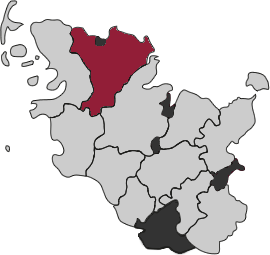| Zur letzten Suche | |||||||||
|
|
|||||||||
|
|
Öffnungszeit
Mai-Okt.: Mi-So 13– 17 Uhr |
||||||||
|
Das Industriemuseum Kupfermühle bietet erlebbare Industriegeschichte an. In Kupfermühle, einem Ortsteil von Harrislee, befindet sich eines der bedeutendsten Zeugnisse schleswigscher Industriegeschichte. 350 Jahre wurden in dem idyllisch gelegenen Ort an der Flensburger Förde Kupfer- und Messingbleche produziert und verarbeitet. Aus dem Industriestandort entwickelte sich ein lebendiges Museum. Seit Juli 2014 wird die Industrie- und Technikgeschichte in drei renovierten Industriehallen neu und erlebnisreich präsentiert.
Eine einmalige Kupfersammlung und ein historischer Rundgang führen die Besucher in die Industrie- und Regionalgeschichte ein. Funktionstüchtige restaurierte Maschinen, ein Hammerwerk mit Wasserradantrieb, alte Kupfer- und Eisenschmieden, eine denkmalgeschützte 700 PS-Dampfmaschine und vieles mehr werden vorgeführt und erklärt. Der Ort selbst ist ein architektonisches Denkmal der Industriegeschichte mit den Arbeiter- und Direktorenhäusern und den alten Industrieanlagen. |
|||||||||
Name des Museums
Titel des Bildes
Titel des Bildes

